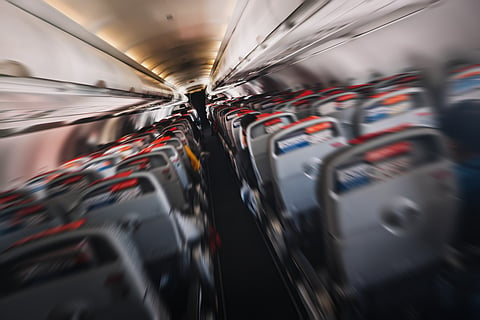
- Destinations
- Experiences
- Stay
- What's new
- Editor’s Picks
- Responsible Tourism
- CampaignsCampaigns
- Subscribe

On May 24, 2024, a Singapore Airlines flight from Singapore to London encountered severe Clear Air Turbulence (CAT). Despite being in clear skies, the aircraft experienced sudden and intense turbulence, leaving one dead (due to a suspected heart attack) while leaving other passengers and crew members severely injured. This followed another incident on May 26, 2024, when 12 people (including six crew members) onboard a Dublin-bound Qatar Airways flight sustained injuries due to turbulence. Both incidents occurred without prior warning. To understand the unpredictable nature of turbulence and its various aspects, we spoke to Shakti Lumba, former Executive Director of Alliance Air and Vice President of Operations at IndiGo.
Turbulence refers to irregular air movement that results from various atmospheric conditions. It can occur in different forms, such as thermal, mechanical, or clear air turbulence. Thermal turbulence is caused by heating the Earth's surface, mechanical turbulence results from obstacles like mountains, and clear air turbulence occurs in clear skies, often without any visible warning signs.
Clear air turbulence is tricky because it is not associated with visual cues like clouds or storms, making it difficult for pilots to detect and avoid. It is typically found at altitudes between 20,000 and 40,000 feet, where jet streams and air currents interact. Wind speed and direction changes can create pockets of turbulence in otherwise calm air.
Such incidents are rising primarily due to climate change, said Shakti Lumba. "Research has shown that clear air turbulence (CAT) incidents have increased by 20 per cent in the last 10 years."
"Various factors cause it. One is Wind Shear when two winds from opposite directions meet. Second is due to the heating of the Earth. As it heats up, the warm air rises."
Experts also suggest that climate change alters atmospheric conditions. Increased greenhouse gas concentrations are also causing shifts in weather patterns and atmospheric circulation, further intensifying the frequency and severity of CAT, making air travel bumpier and less predictable. With the rise in global temperatures, the jet streams—fast-moving air currents in the upper atmosphere—become stronger and more erratic. Warmer air masses can enhance wind shear, a primary factor in CAT.
The primary risk to passengers during turbulence, especially severe turbulence, is injury. Injuries often occur when passengers are not seated with their seatbelts fastened. During the Singapore Airlines Flight 321 incident, passengers who did not buckle up while seated "hit the aircraft's ceiling," as per reports.
The veteran pilot said wearing a seat belt is the only way to prevent injury. "Passengers should keep their seatbelts fastened even when the seatbelt sign is off."
Besides, advances in technology are aiding the detection and management of CAT. Enhanced weather radar systems and satellite-based tracking provide better forecasting, allowing pilots to alter flight paths to avoid known turbulence areas. Research into LiDAR (light airborne laser radar) technology shows promise for future CAT detection, potentially giving pilots real-time data to prevent turbulence.
"LiDAR can see CAT, unlike conventional radar, which cannot detect it. It operates on a different frequency and wavelength than radar, allowing it to detect the turmoil in clear air," said Lumba.
"However, the current LiDAR systems are bulky and heavy, making them unsuitable for aircraft installation. Efforts are underway to make LiDAR technology smaller and comparable to radar systems. Once this is achieved, pilots and aircraft can detect CAT up to 20 miles ahead, significantly enhancing flight safety."
Pilot Communication: Pilots can receive reports from other aircraft and weather services about potential turbulence, although CAT remains challenging to predict.
Aircraft Design: Modern aircraft are built to withstand significant turbulence. Despite the jarring experience, the plane's structural integrity is usually not compromised.
Cabin Crew Training: Flight attendants are trained to manage turbulence-related situations, ensuring passengers are seated and secured as quickly as possible.
